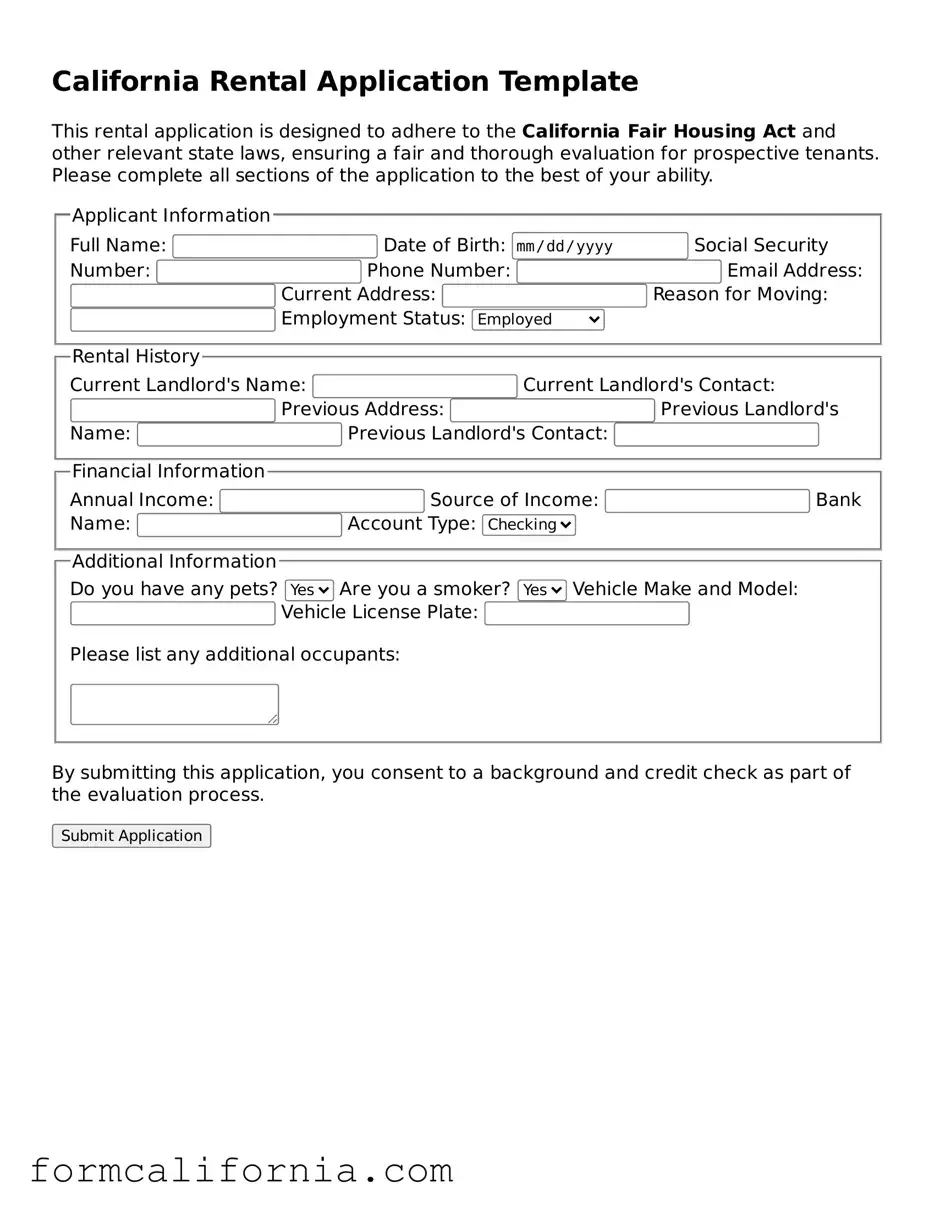The California Rental Application form is a document used by landlords to gather information from potential tenants. It's designed to help landlords evaluate whether an applicant is suitable for a rental agreement, assessing their rental history, financial stability, and overall reliability as a tenant.
Applicants are typically required to provide a variety of information, including:
-
Full legal name and contact information
-
Rental history
-
Current employment information and income
-
Personal references
-
Additional occupants who will live in the rental unit
-
Consent for a background and credit check
Is there a fee to submit a California Rental Application?
Many landlords charge an application fee to cover the cost of processing the application and running background and credit checks. The amount can vary, so it's important to ask the landlord or property manager about any fees before submitting your application.
How long does it take to process a California Rental Application?
The processing time can vary depending on several factors, including how quickly references respond and how thorough the background and credit checks are. Generally, it can take anywhere from a few days to a week.
Yes, landlords can reject applications based on the information provided. Common reasons for rejection include poor rental history, insufficient income, negative references, or unfavorable background or credit checks.
What are my rights if my application is rejected?
If your application is rejected, you have the right to know why. Landlords are required to provide a written explanation if the rejection is based on information obtained in a credit report. Additionally, you have the right to receive a copy of the report and to dispute any incorrect information.
How can I improve my chances of being accepted?
To improve your chances of acceptance:
-
Ensure all information provided on the application is accurate and complete
-
Provide references from previous landlords or property managers
-
Show proof of stable income
-
Consider obtaining a co-signer if your credit history is not strong
Is it possible to apply for a rental without a Social Security number?
Yes, it is possible. Some landlords may allow you to apply with an Individual Taxpayer Identification Number (ITIN) instead of a Social Security number. Additionally, landlords may consider other forms of verification, but it's important to discuss this with them directly.
If you have questions about your application or the process, you should initially contact the landlord or the property management company handling the rental. They can provide specific details and assistance related to your application.
